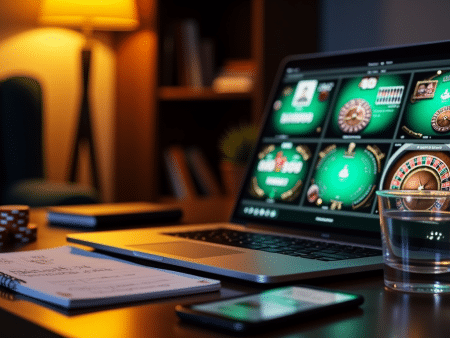
Players who count cards successfully at blackjack can earn $20-40 per hour at local casinos, and the earnings can exceed $100 in Las Vegas.
Card counting remains legal, yet casinos actively work against skilled counters. Many venues now use electronic databases to track suspected counters and share their photos and details with other establishments.
Edward O. Thorp’s publication “Beat the Dealer” earned him recognition as the “father of card counting.” His work helped turn this strategy from a mathematical concept into a proven way to gain an advantage. The Zen Count system yields an impressive 2.00% profit rate, and simpler systems come close to matching this performance.
The path to success demands more than memorizing numbers. Players need to learn basic strategy, keep accurate counts, and adjust their bets – all without drawing attention.
This piece shows you the exact steps to become skilled at blackjack card counting. You’ll learn everything from core principles to advanced methods that create a real edge at the tables. Ready to begin?
Understanding Blackjack Card Counting Fundamentals
Card counting depends on the mathematical principle of conditional probability – future outcomes depend on cards already played. Blackjack stands apart from other casino games because each card dealt changes the probability of upcoming hands.
The Science Behind Card Counting Systems
The system tracks the ratio of high cards (10s, face cards, aces) to low cards (2-6) left in the deck. We noticed that high cards give players an edge by increasing natural blackjack chances, improving double-down opportunities, and making dealer busts more likely. Low cards help the dealer because dealers bust less often on mandatory hits for stiff hands (12-16 total).
Simple Mathematical Principles
Modern card counting systems give point values to cards based on their Effect of Removal (EOR) – how each card affects the game when removed from play. Most players use the Hi-Lo system, where:
- Cards 2-6 carry a value of +1
- Cards 7-9 are neutral (0)
- 10s through Aces are valued at -1
The running count begins at zero and changes with each dealt card. Players calculate the true count by dividing the running count by the number of remaining decks in multiple-deck games. Each true count point moves the house edge about half a percent in the player’s favor.
Why Card Counting Works
Card counting works because players can spot situations where odds turn in their favor. A positive count shows more high cards remain, which increases the chances of favorable outcomes. A skilled counter can gain up to 1% advantage over the house. You don’t need extraordinary mental abilities – success comes from keeping an accurate count rather than memorizing specific cards.
Casino conditions and counting method complexity determine the system’s effectiveness. Level 1 systems (like Hi-Lo) balance simplicity with results, while advanced systems can reach 70% playing efficiency without side counts. Success in counting combines mathematical precision with practical application, making it a valuable tool for skilled players.
Mastering Popular Blackjack Counting Systems
The Hi-Lo system is the life-blood of blackjack card counting. Harvey Dubner introduced this system in 1963.
Hi-Lo System Breakdown
The Hi-Lo system uses simple point values: +1 for cards 2-6, 0 for cards 7-9, and -1 for tens and aces. Players keep a running count that starts at zero and changes based on each card shown. The true count comes from dividing the running count by remaining decks in multiple-deck games. This helps players figure out their optimal bet sizes and strategy adjustments.
Advanced Counting Methods
Several sophisticated systems exist that boost counting precision beyond Hi-Lo. The Zen Count reaches an impressive 2.00% profit rate in single-deck games. The Wong Halves system shows a betting correlation of 0.99 and playing efficiency of 0.56, but needs more complex math. We used the Omega II system with experienced players, which gives a betting correlation of 0.92 and playing efficiency of 0.67.
Choosing the Right System for You
Your skill level and playing environment should determine which counting system you pick. Here’s a comparison of popular systems based on ease of use (rated 1-10, with 10 being easiest):
| System | Ease of Use | Betting Correlation |
|---|---|---|
| Hi-Lo | 6.0 | 0.97 |
| K-O | 7.5 | 0.98 |
| Omega II | 4.0 | 0.92 |
Level-1 systems, especially when you have the Hi-Lo, remain most professional players’ top choice. Higher-level systems perform only 0.1% better, making them unnecessary for most players. Success comes from accurate execution and proper betting strategies, not system complexity.
Unbalanced counts like K-O are great for longer playing sessions because you don’t need true count conversion. Your success is nowhere near dependent on system selection. Instead, it comes down to consistent practice, proper bankroll management, and knowing how to maintain accurate counts under casino conditions.
Essential Practice Techniques
Card counting in blackjack requires dedicated practice and steadfast discipline. A professional card counter must achieve 100% accuracy before playing in casinos.
Solo Training Methods
Your journey starts with single-deck practice in a quiet environment. Accuracy comes before speed. The path to mastery includes these steps:
- Count through one deck until reaching zero consistently
- Practice with double decks for variance
- Deal to imaginary players to simulate real gameplay
- Add distractions gradually while keeping the count
- Incorporate true count conversion drills
Speed and Accuracy Drills
Card counters must reach specific speed measures. You should count a complete deck in no more than 20 seconds by hand or 15 seconds with computer programs. Speed drills should include keeping the running count while dealing to multiple spots.
Accuracy drills involve dividing random numbers by remaining decks to calculate true counts. This approach develops quick mental calculations needed in multi-deck games. Players should practice until they can execute perfect basic strategy while maintaining accurate counts.
Common Mistakes to Avoid
We noticed new counters struggle with overbetting their bankroll and playing unbeatable games. Many focus too much on counting speed and neglect accuracy. Recording all count deviations during practice helps identify areas that need improvement.
Most counters fail because they rush into casino play before achieving complete mastery. Even skilled mathematicians need extensive practice. One experienced counter practiced for two weeks straight and reduced his counting time from over a minute to 15-20 seconds per deck.
Casino play brings its own challenges. Many counters find that keeping accurate counts amid distractions takes substantially more skill than home practice. Successful training must include casino-like conditions with noise, conversation, and varying deal speeds.
Advanced Strategy Implementation
Card counting success in blackjack depends on precise betting strategies and a sharp eye for casino operations.
Betting Spread Optimization
Your long-term profits depend on optimal betting spreads. A standard 1-5 unit betting spread draws minimal attention and yields a positive return of 0.14%. More aggressive spreads of 1-12 units can boost earnings, but they draw more scrutiny from casino staff.
This betting spread works well based on true count:
| True Count | Bet Size |
|---|---|
| Below +1 | 1 unit |
| +2 | 2 units |
| +3 | 3 units |
| +4 or above | 5 units |
Playing Deviations
The Illustrious 18 represents the most profitable basic strategy deviations and boosts game profitability by about 10%. These deviations rely on specific true count values. The core adjustments include:
- Standing on 16 against dealer’s 10 with positive counts
- Taking insurance only at true counts of +3 or higher
- Doubling down more aggressively on 10 and 11 in favorable counts
Heat Management
Casino awareness is vital for lasting success. Watch for these heat indicators:
- Security’s unfriendly recognition at entry
- Multiple supervisors gathering around your table
- Increased frequency of deck shuffling
- Special dealers rotating in
These countermeasures help minimize heat:
- Buy in for smaller amounts at low-roller establishments
- Keep a natural playing speed without obvious counting gestures
- Don’t stare at discard trays
Deck composition affects your strategy decisions. The odds of dealer busting increase with a rising true count, which justifies more conservative playing decisions. You must balance optimal play with camouflage techniques.
Local casinos typically yield USD 20-40 per hour for professional counters, and Las Vegas earnings can reach USD 100 per hour. Yes, it is true that these earnings depend on proper bet sizing and accurate strategy while staying under the radar.
Real Casino Environment Adaptation
Card counters face unique challenges on busy casino floors. Noise, flashing lights, and constant movement create an environment that tests even the most focused players.
Dealing with Distractions
Casinos build environments filled with sensory distractions. The mix of loud music, announcements, and slot machine chimes makes it hard to maintain accurate counts. Card counters must develop ways to track numbers while dealing with interruptions from servers, talkative dealers, and other players.
To stay focused despite distractions:
- Count cards with background noise during practice
- Learn memory techniques that help retain counts
- Become skilled at counting while having casual conversations
- Set mental checkpoints throughout each shoe
Camouflage Techniques
Professional counters use various disguise methods to stay undetected. Successful players switch their appearance between sessions and alternate between different personas. To name just one example, a player might look like a tourist in the morning and return as a business professional later.
Players need behavioral camouflage too. Experienced counters usually:
- Keep their playing speed natural
- Take part in table conversations
- Mix up betting patterns sometimes
- Don’t show obvious signs of concentration
Modern Casino Countermeasures
Today’s casinos use advanced methods to spot and monitor card counters. Their surveillance combines human watchers with high-tech systems. Most venues share databases that quickly alert other properties about suspected counters.
Modern detection methods include:
| Countermeasure | Purpose |
|---|---|
| Facial Recognition | Spots known counters at different properties |
| RFID Technology | Monitors betting patterns and player habits |
| Expert Observers | Watches player behavior and betting changes |
| Automated Software | Looks for counting patterns in play |
Casino staff pays extra attention to specific behaviors. Red flags include unusual betting patterns, too much focus during play, or turning down free drinks. Pit bosses watch for players who think too hard or show strange levels of concentration.
Online casinos create different challenges. These sites use continuous shuffling algorithms and random number generators that make traditional counting impossible. Many physical casinos now use automatic shuffling machines to stop counting attempts.
Players adapt their strategies based on these countermeasures. Some casinos use a “5-times rule” that stops players from raising bets more than five times their previous wager. This rule limits counting effectiveness but lets casual players enjoy their games normally.
Conclusion
Blackjack card counting is a proven advantage play technique that just needs dedication, practice, and strategic implementation. Players who master this skill put in most important effort, but the potential rewards make it worthwhile.
Card counting success depends on three key elements. A full understanding of mathematical principles and counting systems creates the foundation. Perfect accuracy under pressure comes from constant practice. Players must carefully adapt to casino environments to maintain profits and stay undetected.
Note that professional card counting takes patience and discipline. Players should start with simple systems like Hi-Lo and practice until they achieve 100% accuracy before moving to casinos. Local establishments can yield $20-40 per hour for most successful counters. This proves that players can achieve consistent profits with proper technique and bankroll management.
The journey to skilled counting takes commitment, but the math advantage is clear. Card counting gives dedicated players a legitimate edge against the house when they practice and execute properly.
FAQs
Q1. What is the most effective card counting system for blackjack?
The Hi-Lo system is widely considered the most effective for beginners and professionals alike. It’s relatively simple to learn, with cards 2-6 valued at +1, 7-9 at 0, and 10s through Aces at -1. This system offers a good balance between ease of use and effectiveness, with a betting correlation of 0.97.
Q2. When should I increase my bets while counting cards?
You should increase your bets when the true count (running count divided by remaining decks) becomes positive, especially at +2 or higher. As the count increases, so does your advantage, justifying larger bets. However, it’s crucial to balance this with camouflage techniques to avoid detection.
Q3. How does the mathematics of card counting work?
Card counting is based on tracking the ratio of high to low cards remaining in the deck. Each card is assigned a point value, and players maintain a running count. This count is then converted to a true count in multi-deck games. Each true count point shifts the house edge by approximately 0.5% in the player’s favor.
Q4. Is card counting illegal, and what are the consequences if caught?
Card counting is not illegal, but casinos have the right to refuse service to anyone they suspect of counting. If caught, you may be asked to leave the casino or be banned from playing blackjack. In extreme cases, you could be trespassed from the property. However, casinos do not resort to physical violence against card counters.
Q5. How long does it take to become proficient at card counting?
Becoming proficient at card counting requires dedicated practice. Most experts recommend achieving 100% accuracy before attempting to count in a casino environment. This typically involves several weeks to months of consistent practice, including speed drills, accuracy exercises, and simulating casino distractions. The transition from practice to real casino play often requires additional adjustment time.



